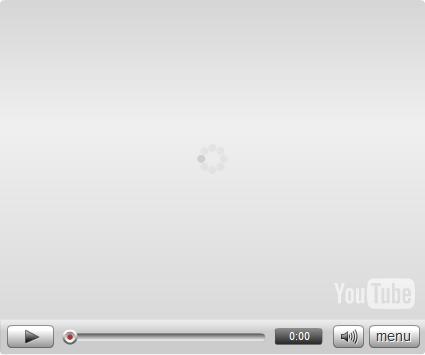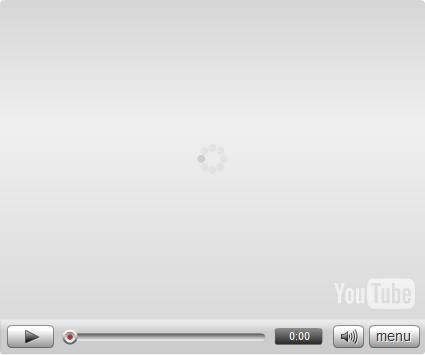We’ve seen basses and turntables made from motorcycles, and bicycle parts turned into DJ setups, ensembles, and The Nutcracker. But The Car Music Project has gone further, building two entire ensembles out a single car, first a sound designer’s old Honda Accord and, more recently, deconstructing a brand-new Ford Focus into a full instrumental ensemble in just five weeks.
In other words, before — a five-door 2008 Ford Focus hatchback as built for the UK market looks like this:

… and after the Car Music Project gets to it, 21 parts from that car become 31 individual instruments:

The ad campaign premiered yesterday in England. Above: the extended, three-minute version.
More: More cowbell! Ford turns Focus into musical instruments [Autoblog]
I got to talk to New York-based sound designer Bill Milbrodt, who led a 22-person team to build the instruments, with Ray Faunce III managing fabrication. Composer Craig Richey, who scored The King of Kong, Friends With Money, and Lovely & Amazing (among others), wrote the music for the ensemble.
Bill describes to CDM the daunting task of going from Ford hatchback to chamber ensemble. It’s an incredible insight into instrument design and construction, whether your DIY instrument tastes tend in the acoustic or digital realms.
PS, to the Crave blog and other doubters: the music is real. They actually made some fantastic-sounding instruments out of that Ford Focus. I certainly know when I buy an automobile, I like the peace of mind that comes from buying one I could later deconstruct with 22 skilled metalworkers and play original scores on.
You describe taking delivery of the car with one mile on its odometer, then immediately proceeding to deconstruct it. How much pre-planning was involved to figure out how to construct the instruments? How much was sort of improvised on the spot with the car?
[None of the construction] was really improvised on the spot. The car was dismantled completely, and the parts were sorted into boxes and around the workshop (door parts with door parts, etc.). I had previous experience making the Car Music Project instruments from my old Honda Accord, so that experience was applied. But, the basic process is one of putting together a puzzle.
We had requirements for wind, brass, percussion, and string instruments that could play the music that was presented to us. We were also required — for credibility and authenticity — to make instruments from intact car parts as much as possible (as opposed to making major or defining parts out of sheet metal from the body of the car). And most important, the instruments had to A) be able to play in tune according to traditional western standards, and B) they had to be physically close enough to traditional instruments to enable professional musicians to learn them quickly because they would only have one or two rehearsals before recording the music. Finally, they had to be visually attractive; call it compelling if you like. In other words, television is mainly a visual medium and they needed to look great.
Back to putting together the puzzle … We laid the car parts out, on the floor and on work tables, to see what parts might fit together in functional and interesting ways. We tried this with that, that with this, and both this and that with the other thing, drawing on our previous experience along the way (i.e.: “That won’t work because …” or “Ah, that will work nicely because …”). We combined and made notes, along with videos, photographs, and sketches that were sent to the director, Noam Murro. When he liked and approved an idea, we began building.
Now, you must realize, a car has only so many parts. Two cars were shipped to us from Europe. So, in considering the “puzzle,” we had to make sure we did not use a part on a not-so-necessary instrument that would be needed on a necessary instrument. But, that is the kind of issue that gets sorted out along the way and which having done it previously helps.
What’s in the actual ensemble – we can see some in the ad, but happy to know more. What are some of the instruments of which you’re most proud?
Some of the instruments in the ensemble include the:
- Clutch Guitar (ornamented with a backdrop from inside a door),
- a Spike Fiddle made from a rear suspension mount and a shock absorber,
- the Ford Fender Bass made from fenders and a pillar/roof support,
- a Shockbone made primarily from shock absorber parts,
- a Window Frame Harp,
- an Opera Window Violin,
- and a Dijeruba which works both as a dijeridu type of instrument and a primitive sort of tuba.
My personal favorites are the Ford Fender Bass and the Window Harp.
How long did the construction process take?
We had an approximate total of five weeks from the day the car was taken apart to the day the instruments were shipped from Pennsylvania, where we built them, to Los Angeles, where they were being recorded and where the commercial was being shot. The bulk of the construction occurred during a three-and-a-half week period in the middle of that. Then, on the west coast, we added visual enhancements and made additional props for use in the visual commercial.
How much rehearsal was necessary to learn to play these essentially “new” (if traditionally-inspired) instruments?
The musicians had two rehearsals: One evening rehearsal of about 2-1/2 hours and one Saturday rehearsal of about 6 hours.
What other sorts of instrument building have you done? I see you’re offering to create more custom instruments for paying customers!
I built all of the instruments for the Car Music Project which also represent all 4 families of the traditional orchestra. They include the Tank Bass, Air Guitar, Strutbone, Exhaustaphone, Convertibles, Tube Flutes, Frame Harp, Doorimba, Wheel Drums, Floor Cymbals, Trunk Drums (55 percussion pieces altogether).
For clarification, I want to point out that I am not a metal fabricator. I pull a team of very talented people together and direct the instrument-making process. The fabrication processes of the Ford Focus instruments were overseen by Ray Faunce III. Ray also fabricated the Car Music Project instruments. Although I oversee the design and construction processes, contributions to the designs and construction come from a lot of people. I don’t do this alone. For the Ford Focus project, I had about 22 great people working for me and contributing their immense talents. My job is not unlike that of a film director: It’s my job to understand the vision and direct the entire process toward the achievement of that vision. In the case of the Car Music Project, the vision was mine. In the case of the Ford Focus project, the vision was director Noam Murro’s.
What was Craig Richey’s involvement; were there special considerations composing for this kind of ensemble?
Craig Richy composed the music for the Ford Focus Orchestra commercial. He was involved from the beginning because it was his music that our instruments needed to be capable of performing. I communicated with Craig through the process as we determined how many of what kinds of instruments we would need. And, once the instruments were built, Craig needed to adapt his music to the instruments.
In other words, they are car part instruments. They are not manufactured, traditional instruments with hundreds of years of engineering and technology behind them. Each is one-of-a-kind. So, although they were intentionally designed to perform in manners similar to their traditional counterparts, he still needed to adapt. If a player could not get an instrument to play a melody quickly enough, he would modify his arrangement a bit, perhaps swapping parts with another instrument or splitting a melody between two instruments. Everyone in the process needs to adjust!
This was, of course, a new car – but can these techniques offer new methods of recycling waste materials?
Well, for the Car Music Project, I recycled an old car. I don’t see why old cars can’t be recycled into other things. To some extent, I believe that is done today. Auto salvage companies/junkyards crush cars, separate the materials, and sell the residual materials off to be made into new things. My guess, though, is that we can always do a better job of it.
Were there parts left over?
Yes, but not much that was useful.
Side note: Synclavier Disk Recording Number 5
By the way, Peter, I noticed your site is largely about digital media. Related to sampling, etc., I had one of the first commercial studios to record directly to disk. In 1987 I installed a New England Digital Synclavier with Direct-to-Disk recorder. The manufacturer told me I was #5. Can’t prove it was true, but that’s what they told me (besides, it really ages me; eh?!?)
Here’s the finished ad spot:
And if this is entirely too much automobile talk for your more environmentally-minded soul, here’s the Nutcracker Suite as realized on (sampled) bicycle parts, from composer Flip Baber:
For more music on car part instruments, check out the ensemble’s full page — there are even DVDs and CDs available:
More music and videos and info at the Car Music Project MySpace Page
See also:
Milbrodt Music, Bill’s page
More Details — And Yes, These Are Real
Questions about the authenticity of the ensemble actually wound up leading to a lot more details about how the instruments were played, why this particular ensemble wound up sounding somewhat “classical” or conventional, and what you’re hearing when you watch the ad:
Yes, Virginia, There Really is a Ford Car Part Musical Ensemble




